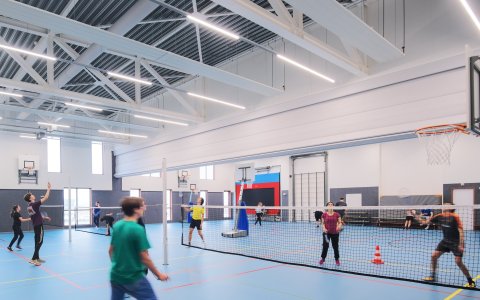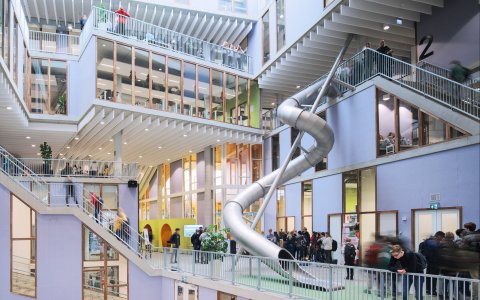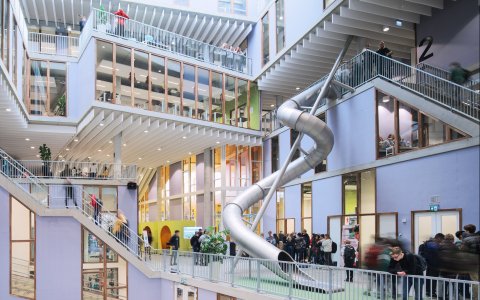
Hyperion Lyceum, Amsterdam
Amsterdam has achieved several important milestones in its efforts to develop the northern bank of the IJ river. One of these is the Badhuiskade in the Overhoeks neighbourhood, where newly built hotels, office blocks and apartment buildings gained a new neighbour in the form of the Hyperion Lyceum (secondary school), when it moved into its new premises. Designed by Ector Hoogstad Architecten on commission for Stichting Voortgezet Onderwijs van Amsterdam (Foundation for Secondary Education in Amsterdam), the building was conceived to encourage independent thinking and engage the mind.

Project details
Name Hyperion Lyceum
Client Stichting Voortgezet Onderwijs van Amsterdam
Location Amsterdam
Status Completed summer 2018
Awards & Nominations Nominated Architectenweb Awards 2018
Architect Ector Hoogstad Architecten
Building costs consultant IGG
Contractor Bouwgroep Dijkstra Draisma
Construction engineer Pieters Bouwtechniek
Construction management ICS
Installations Breman
Installations consultants DGMR and Innax
Interior design Zenber
Landscape architect Felixx
Photography Petra Appelhof
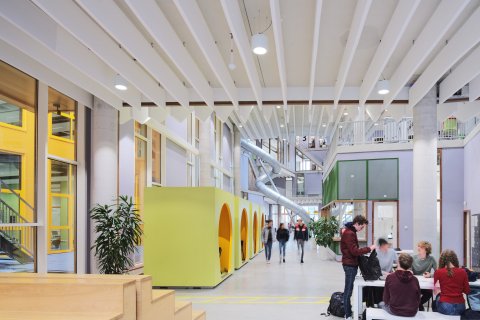
Embedded in Amsterdam North
Educational institutions are an important component of large-scale urban developments, not just for their practical functions but they also add character and diversity to a neighbourhood. In addition, it’s crucial that these institutions are properly embedded in the neighbourhoods and societies they serve.
The Hyperion Lyceum aims to foster free and independent thinking in its students, and help them develop a capacity for empathy and a social conscience that leads them to play an active role in society. To this end, our design is deliberately unconventional for a school building, and boasts an elusive quality that acts as a never-ending source of intellectual and creative stimulation and inspiration.
Double helix
The building is unusually tall for a secondary school. Its structure is that of a vertically connected double helix, comprising an atrium and an outdoor route composed of a series of interconnected terraces that wind their way up the building. The atrium lets in an abundance of natural light, which illuminates the interior all the way dawn to the basement-level bicycle storage facility, enabling this area of the building to feel like an integral part of the school. Long diagonal sight lines offer unobstructed views between floors and provide spatial clarity. Each floor has its own unique shape, resulting in a circuit of terraces at various levels both inside the atrium and on the outside of the building, all interconnected through a series of staircases.
The terraces provide very necessary outdoor space, and are designed to anchor the building in its surroundings. Collectively, they take the place of a conventional schoolyard, and also provide a variety of indoor and outdoor areas for quiet study. Each has its own theme (forum, urban garden, sports terrace, outdoor lounge, playground, even a teachers’ terrace), and provides a particular view of and connection with the surrounding neighbourhood and city.
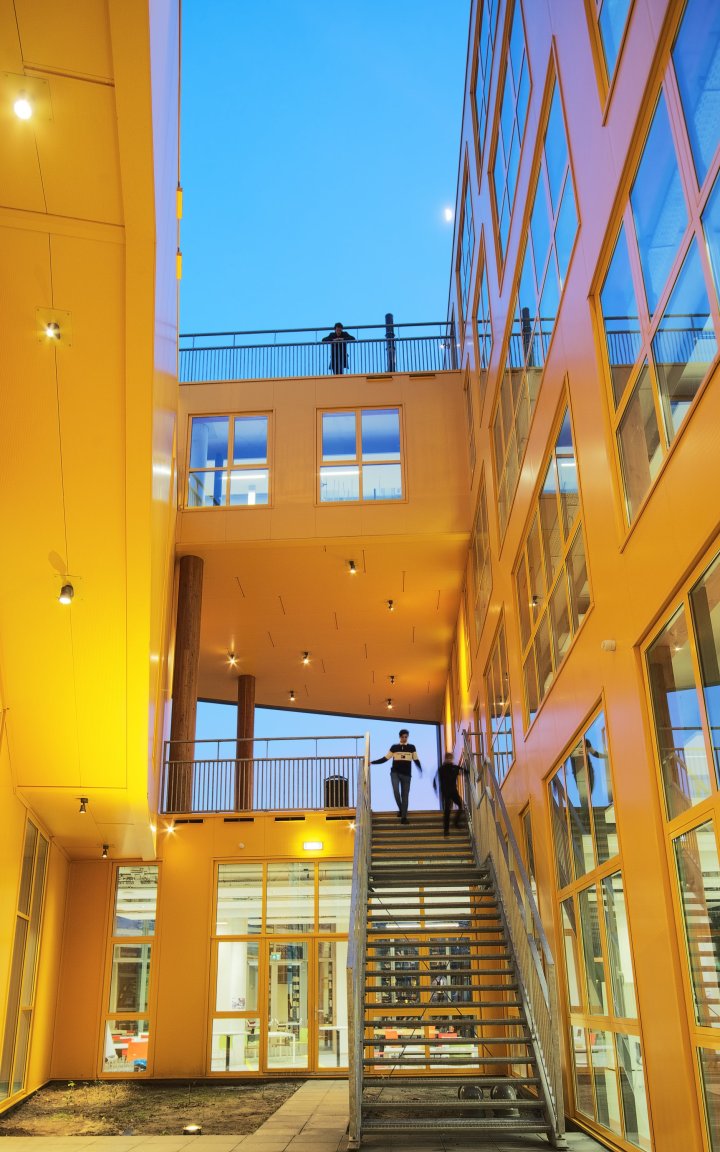
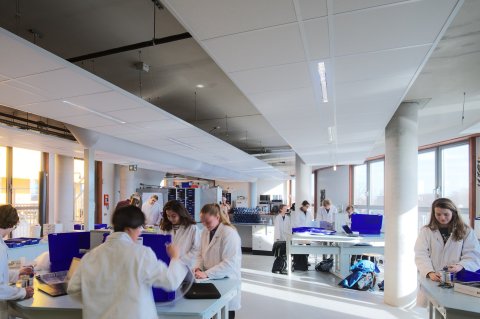
Adventurous spaces
Classrooms are also arranged thematically, and the school’s various educational disciplines, such as languages, natural sciences, philosophy, mathematics and sports, all boast their own visually distinctive – and often quirkily shaped – teaching lab, each commanding attention from its place in the building. Consequently, no matter where you are in the building, you are always surrounded by intriguing spaces that invite you to embark on adventures around the school, as a result of which you interact more with your fellow pupils.
This adventurous character is informed by a carefully thought-out low-cost approach to construction. The building is decidedly low-tech, with power floated concrete floors, facades of simple sandwich panels, finger-jointed wooden window frames, felt wall panels, basic galvanised steel railings, and so on. The party piece is the two-storey slide in the atrium. Pupils regularly come to school early and stay longer than necessary just to use it. And if witnesses are to be believed, it’s been just as big a hit with parents.
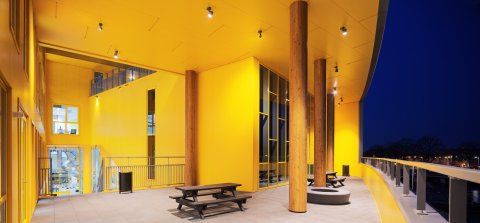
Nurturing curiosity
The Hyperion Lyceum is as unconventional as they come, and illustrates the planned synergy of educational objectives and architecture for the purpose of nurturing the curiosity of young pupils and challenging them to explore the world around them. All being well, the adventurous habits they develop in this safe and controlled environment will remain with them as they proceed through life.
